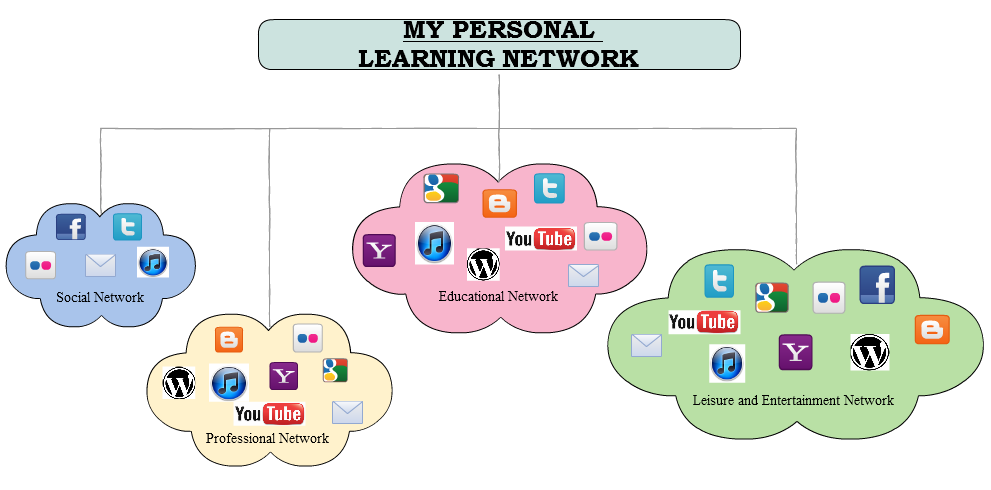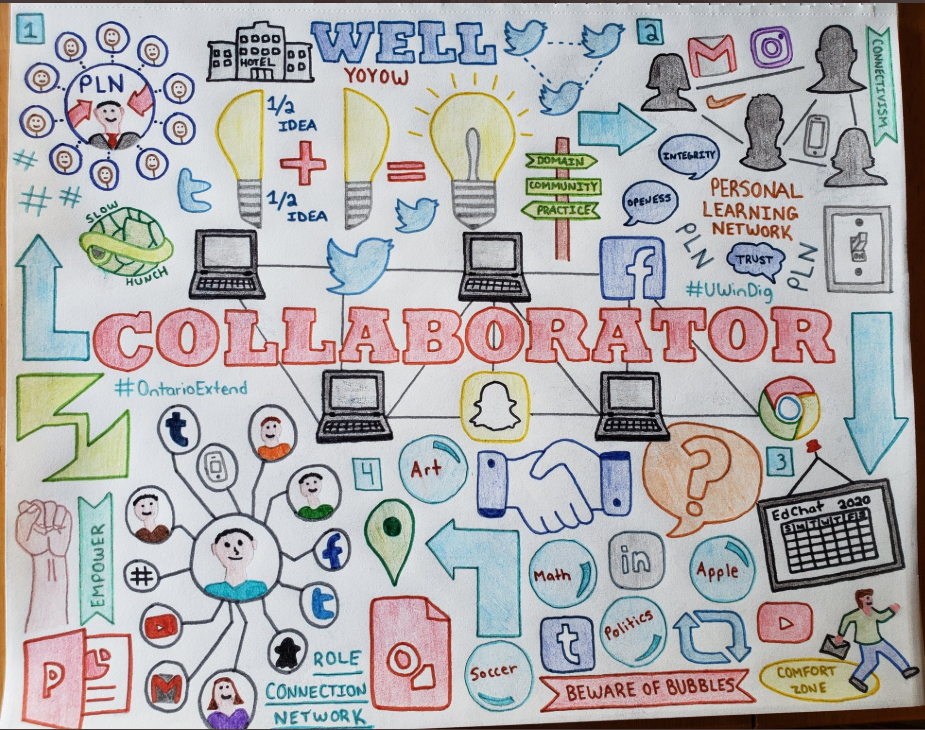For the second multimedia assignment, I chose to explore the Collaborator Module produced by Extend Ontario. In my opinion, the module is a must read for educators looking to develop connections and build their capacity for teaching and learning. The module focuses on creating and expanding personal learning networks (PLNs) through collaborations with others. Extend Ontario divides the module into four main sections that are important to consider when creating your PLN.

First, the explore section discusses the importance of collaboration and identifies ways to collaborate. In a video titled “Where Good Ideas Come From” Steven Johnson argues that most good ideas come from the collision of smaller hunches. I agree with Johnson in that good ideas are often the product of collaboration. Some of my best ideas started out as half ideas and weren’t fully realized until they were combined with ideas generated by others. In order for ideas to collide, we need to develop opportunities for individuals to collaborate. In today’s society, collaboration occurs primarily online where individuals have the ability to broaden their PLN by exploring cross-disciplinary skills and insights. Personally, I have expanded my PLN almost exclusively through social media platforms such as Twitter, Facebook, and Instagram.

Second, the engage section introduces the theory of connectivism. The foundational concept of connectivism is that your PLN provides the context for your learning, not necessarily the content. It recognizes that learners determine the direction of their own learning, but at the same time emphasizes that learning is not an individualistic pursuit, and that we learn as part of a community. The theory of connectivism aligns with my personal experience quite well. I am always in control of my learning when building my PLN. My PLN allows me to learn about topics that interest me as part of a larger community of learners.

Third, the extend section discusses filter bubbles and how to build your PLN. Filter bubbles separate you from information that disagrees with your viewpoints, effectively isolating you in your own ideological bubble. Filter bubbles are something that I can personally relate to. I am a country music fan who often buys concert tickets online. When I’m online, the only advertisements I see are ones related to country music. I have essentially been isolated from all other genres of music. With respect to building your PLN, Twitter appears to be most effective. Twitter allows you to quickly and easily connect with other educators who share similar interests. Personally, I engage in open hashtag conversations as a way to communicate with other teachers and teacher candidates.

Lastly, the empower section teaches you how to map your PLN. Effectively mapping your PLN helps identify the people, organizations, collectives, and others who are in your network. This allows you to rearrange and re-design your PLN as patterns emerge. The best way to map your PLN is to create a visual diagram using an online tool such as Google Drawings, Coggle, or PowerPoint. Mapping my PLN is something I hadn’t considered prior to reading this module. However, I believe it’s a good way to expand my network and support my teaching.

When choosing a medium to create my artifact, I took the advice of Extend Ontario and collaborated with members of my PLN to expand my knowledge. Ultimately, I decided to create a sketchnote. I chose to create a sketchnote because there was a minimal learning curve and it provided me with the best opportunity to be creative. I felt like my creativity was restricted when creating my infographic for the first multimedia assignment. I also disliked the way that Piktochart tracked and collected my data.

